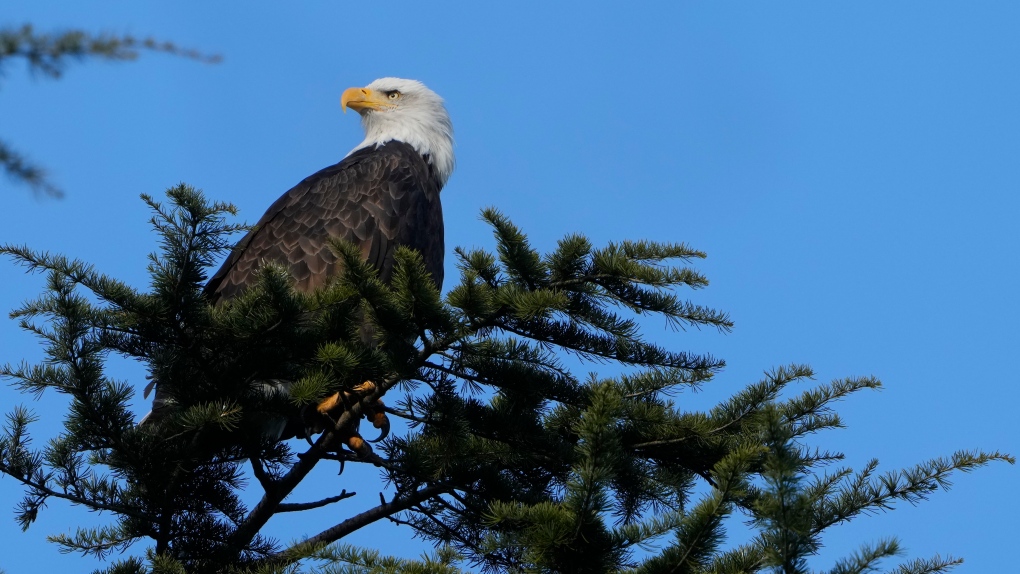First-ever bald eagle nest discovered in Toronto, conservation authority confirms

For the first time ever, a bald eagle’s nest has been discovered in Toronto, the city’s conservation authority confirmed Thursday.
The news comes less than one year after Ontario removed the regal bird from its “at-risk” species list.
“Toronto and Region Conservation Authority (TRCA) can confirm this is the first documented Bald Eagle nest in Toronto,” Afiya Jilani, spokesperson for the TRCA, said in an email to CTV News Toronto.
However, bird lovers are being asked not to go searching for the rare sight and its location is not being disclosed “in any way,” says the TRCA.
“Bald eagles are sensitive creatures, particularly during their nesting period. It would be a disservice to draw public attention to them at this time,” Jilani said. “It’s crucial to maintain their habitat as it is during a sensitive time and to prioritize their welfare, especially in the early stages of the nesting process.”
The secrecy surrounding the location of the nest may come as a surprise to some, but is easily explained by the fact bald eagles were almost wiped out of existence in Ontario half a century ago due to the use of pesticides.
The insecticide DDT was especially harmful to eagle’s nests and eggs and has since been banned in Canada and the U.S.
Bald eagles were placed on the province’s “at-risk” species list for about 50 years as its population in the province dwindled. The bird was classified as one of “special concern” under the Endangered Species Act.
Since then, the bird was taken off the list and Ontario’s environment ministry said the bald eagle has thrived to about 2,600 nests as of May 2023.
Then Environment Minister David Piccini called the eagle’s reclassification as a “not at-risk” species in the province “a big win for Ontario.”
“I mean, talk to anyone now they are starting to see them again,” he said in an interview with CTV News Toronto at the time.
Bald eagles typically nest in large trees near a major lake or river, where they do most of their hunting, and are widley distributed throughout North America, according to the Ontario environment ministry. They’re known to feed on fish, but can easily catch ducks.
View original article here Source









